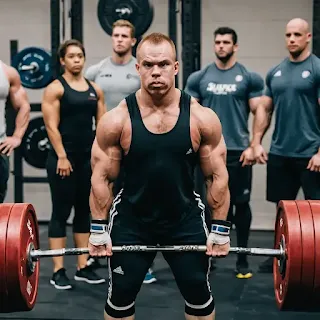Powerlifting, the strength sport centered around the squat, bench press, and deadlift, attracts individuals of all shapes and sizes. While some body types might seem inherently advantageous, the reality is far more nuanced. This article delves into the common misconceptions surrounding body type and powerlifting success, exploring the factors that truly contribute to achieving peak performance.
The Myth of the "Ideal" Powerlifter Physique
The internet is rife with discussions about the perfect body type for powerlifting. Often, images of extremely muscular individuals dominate these conversations. This leads many to believe that only those with a naturally large frame – often categorized as mesomorphs in the outdated somatotype system – can excel. This is a significant oversimplification. While mesomorphs might possess a genetic predisposition towards muscle growth, their advantage is not insurmountable. Many successful powerlifters defy this stereotypical image.
The truth is, powerlifting success hinges on far more than just genetics. While body composition undeniably plays a role, factors like training methodology, programming, nutrition, recovery, and even mental fortitude are equally, if not more, important.
Deconstructing Somatotypes: Ectomorphs, Mesomorphs, and Endomorphs
The somatotype system categorizes body types into three main groups:
- Ectomorphs: Typically characterized by a lean build, long limbs, and a fast metabolism. They often struggle to gain weight, both muscle and fat.
- Mesomorphs: Possessing a naturally muscular and athletic build, mesomorphs tend to gain muscle relatively easily.
- Endomorphs: Characterized by a stockier build, higher body fat percentage, and a tendency to gain weight more readily.
While these categories offer a general framework, they are far from definitive. Many individuals exhibit characteristics of multiple somatotypes, making a simple classification inaccurate. Furthermore, even within these categories, individual variations are vast.
Factors Beyond Body Type: The Keys to Powerlifting Success
Several crucial factors determine success in powerlifting, overshadowing the limitations or advantages of any specific body type:
1. Training Program: A well-structured training program tailored to individual needs and goals is paramount. This includes proper exercise selection, rep ranges, sets, rest periods, and progressive overload. A poorly designed program can hinder progress regardless of body type.
2. Technique: Correct form is crucial for maximizing strength gains and minimizing the risk of injury. A skilled coach can identify and correct technical flaws, significantly impacting performance. This is true for all body types.
3. Nutrition: Powerlifters require a diet that supports muscle growth, recovery, and energy needs. This involves consuming sufficient protein, carbohydrates, and healthy fats. Nutritional strategies should be personalized based on individual metabolic rates and training demands, regardless of somatotype.
4. Recovery: Adequate rest and recovery are essential for muscle growth and preventing overtraining. This includes sufficient sleep, stress management, and potentially the use of recovery strategies like active recovery or foam rolling.
5. Mental Fortitude: Powerlifting demands mental toughness, discipline, and the ability to push through challenging workouts. A strong mental game is crucial for overcoming plateaus and achieving long-term progress.
Success Stories: Challenging the Stereotype
Numerous successful powerlifters demonstrate that body type is not the sole determinant of success. Many powerlifters with ectomorphic or endomorphic characteristics have achieved remarkable feats of strength through dedicated training, smart programming, and consistent effort. Their success highlights the importance of the factors listed above.
Choosing the Right Weight Class
The weight class a powerlifter competes in significantly impacts their success. Powerlifters should select a weight class that allows them to compete at their strongest while managing their body weight effectively. This involves a balance between muscle mass and body fat, which is highly individualized and not directly tied to a specific somatotype.
Conclusion: Embrace Your Body, Master Your Training
While genetic predispositions influence athletic potential, they do not dictate it. The best body type for powerlifting is the one that is properly trained, fueled, and recovered. Focus on mastering the fundamentals of training, nutrition, and recovery, and you will maximize your potential regardless of your body type. Remember, consistency and dedication are the true keys to unlocking strength and achieving your powerlifting goals. Embrace your unique physique and work strategically to achieve your full potential.
